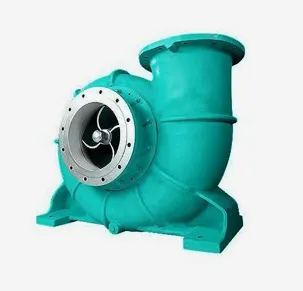Ukrainian
- Afrikaans
- Albanian
- Amharic
- Arabic
- Armenian
- Azerbaijani
- Basque
- Belarusian
- Bengali
- Bosnian
- Bulgarian
- Catalan
- Cebuano
- Corsican
- Croatian
- Czech
- Danish
- Dutch
- English
- Esperanto
- Estonian
- Finnish
- French
- Frisian
- Galician
- Georgian
- German
- Greek
- Gujarati
- Haitian Creole
- hausa
- hawaiian
- Hebrew
- Hindi
- Miao
- Hungarian
- Icelandic
- igbo
- Indonesian
- irish
- Italian
- Japanese
- Javanese
- Kannada
- kazakh
- Khmer
- Rwandese
- Korean
- Kurdish
- Kyrgyz
- Lao
- Latin
- Latvian
- Lithuanian
- Luxembourgish
- Macedonian
- Malgashi
- Malay
- Malayalam
- Maltese
- Maori
- Marathi
- Mongolian
- Myanmar
- Nepali
- Norwegian
- Norwegian
- Occitan
- Pashto
- Persian
- Polish
- Portuguese
- Punjabi
- Romanian
- Russian
- Samoan
- Scottish Gaelic
- Serbian
- Sesotho
- Shona
- Sindhi
- Sinhala
- Slovak
- Slovenian
- Somali
- Spanish
- Sundanese
- Swahili
- Swedish
- Tagalog
- Tajik
- Tamil
- Tatar
- Telugu
- Thai
- Turkish
- Turkmen
- Ukrainian
- Urdu
- Uighur
- Uzbek
- Vietnamese
- Welsh
- Bantu
- Yiddish
- Yoruba
- Zulu
Telephone: +86 13120555503
Email: frank@cypump.com
Гру . 01, 2024 23:13 Back to list
Understanding the Function and Design of Slurry Pump Impellers for Efficient Fluid Movement
Understanding the Slurry Pump Impeller Design, Function, and Applications
Slurry pumps are essential components in many industrial applications, designed specifically to handle heavy slurries, which are mixtures of liquids and solid particles. One of the most critical components of a slurry pump is the impeller, which plays a vital role in the efficient transportation of these abrasive materials. In this article, we will explore the design, function, and applications of the slurry pump impeller, highlighting its significance in various industries.
What is a Slurry Pump Impeller?
The impeller is the rotating part of the slurry pump that transfers energy from the motor to the slurry. It generates a centrifugal force that propels the slurry through the pump and into the designated piping system. The design of the impeller is crucial, as it directly affects the pump's efficiency, wear resistance, and overall performance.
Design Considerations for Slurry Pump Impellers
The design of a slurry pump impeller must consider several factors
1. Material Selection The impeller is often made from robust materials such as high-chrome alloys, rubber, or polyurethane, depending on the abrasive and corrosive nature of the slurry. High-chrome alloys are ideal for handling abrasive materials, while rubber impellers are preferable for more corrosive slurries due to their superior chemical resistance.
2. Impeller Geometry The shape and size of the impeller blades greatly influence the pump's performance. Impellers can be designed with a variety of blade arrangements (e.g., open, closed, or semi-open) to optimize flow rates and minimize cavitation. The blade angle and curvature also play a significant role in determining the efficiency and head capacity of the pump.
3. Clearance The gap between the impeller and the pump casing (known as the clearance) is critical for minimizing wear and maximizing efficiency. A well-calibrated clearance can prevent the recirculation of the slurry and reduce energy losses.
4. Pump Configuration Slurry pumps can be configured as horizontal or vertical pumps. Each configuration has its own advantages and may influence the impeller design. For instance, vertical pumps often require a different impeller geometry to accommodate the vertical orientation and manage the gravitational forces involved.
Functionality of the Slurry Pump Impeller
slurry pump impeller

The primary function of the slurry pump impeller is to convert mechanical energy into hydraulic energy
. As the motor powers the impeller, it spins rapidly, imparting kinetic energy to the slurry. This kinetic energy is converted into pressure energy, allowing the slurry to be efficiently transported through the piping system.The impeller's design directly affects the flow rate and head produced by the pump. A well-designed impeller allows for smooth and continuous flow, reducing the risk of clogs, which is especially important when dealing with slurries containing large or sticky particles.
Applications of Slurry Pump Impellers
Slurry pump impellers find application across various industries, including
1. Mining and Mineral Processing In these industries, slurry pumps are used to transport heavy mixtures of minerals and water. The robust design of the impeller is essential to handle the wear and tear from the abrasive materials.
2. Construction Slurry pumps are used to manage the transport of cement mixtures and other heavy liquids, ensuring efficient processing in construction projects.
3. Wastewater Treatment Impellers are used in the pumping of sludge and other wastewater slurries within treatment facilities, playing a key role in the handling of by-products.
4. Chemical Processing Industries that deal with chemical slurries require impellers designed for enhanced chemical resistance to maintain integrity under harsh conditions.
Conclusion
The slurry pump impeller is a crucial component that significantly impacts the efficiency and effectiveness of slurry transportation in various industries. Its design, including material selection, geometry, and clearance, must be carefully considered to meet specific operational demands. As industries continue to grow and evolve, the importance of advanced slurry pump impellers will only increase, underscoring the need for ongoing innovation in their design and manufacture. Understanding these components allows for better decision-making in the selection and maintenance of slurry pumps, ultimately leading to more efficient industrial processes.
-
Heavy-Duty Mining Sludge Pumps - Wear-Resistant Slurry Handling
NewsAug.02,2025
-
Horizontal Split Case Pump with GPT-4 Turbo | High Efficiency
NewsAug.01,2025
-
ISG Series Pipeline Pump - Chi Yuan Pumps | High Efficiency, Durable Design
NewsAug.01,2025
-
Advanced Flue Gas Desulfurization Pump with GPT-4 Turbo | Durable & Efficient
NewsJul.31,2025
-
ISG Series Vertical Pipeline Pump - Chi Yuan Pumps | Advanced Hydraulic Design&Durable Construction
NewsJul.31,2025
-
ISG Series Vertical Pipeline Pump - Chi Yuan Pumps | Energy Efficient & Low Noise
NewsJul.31,2025










